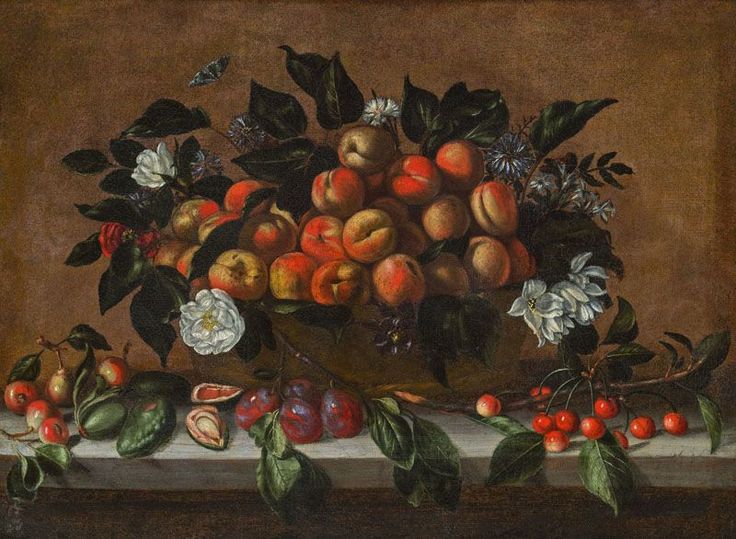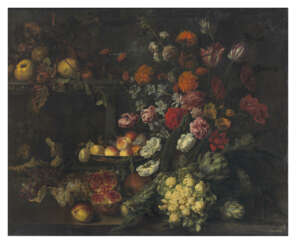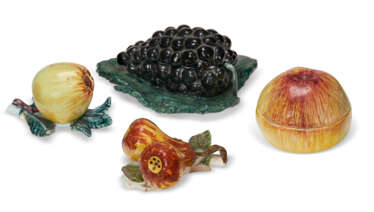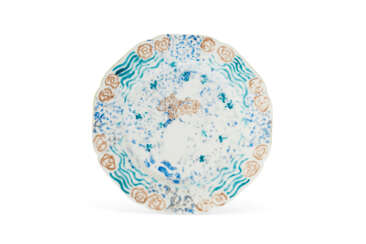fruits et légumes

Agostino Verrocchi was an Italian painter, mainly depicting still-life subjects during the Baroque period. He was active from 1619 to 1636 and mainly in Rome. Verrocchi, alongside other Roman artists like Tomasso Salini, is known for pioneering a new type of still life which placed objects on different levels, to create depth and complexity.


Guiliam Gabron, or Willem Gabron, was a Flemish Baroque still life painter, who worked in a wide range of genres including fruit pieces, vanitas still lifes, flower still lifes, game pieces and breakfast pieces. Gabron was also a gifted animalier and often included living animals in his still life scenes. He initially worked in a monochrome style but developed a more colourful palette after a long stay in Italy.



Jean-Édouard Vuillard was a French artist, celebrated for his role in the avant-garde group Les Nabis. Known for his decorative art and printmaking, Vuillard's work was heavily influenced by Japanese prints, which is evident in his unique style of flattened color planes and simplified forms. His paintings, often of interior scenes, are distinguished by their intimate and domestic subjects, displaying a keen sensitivity to the subtle dynamics of everyday life.
In the late 1880s, Vuillard joined Les Nabis, a group of artists who sought to break away from traditional artistic concepts. This association played a pivotal role in shaping his artistic philosophy. Vuillard’s early works, like "The Seamstresses" (1890) and "Child in an Orange Shawl" (1894–95), demonstrate his evolving style, marked by the use of vibrant colors and a distinct lack of perspective, aimed at exploring spatial relationships.
Vuillard's artistic journey included ventures into theater decoration and interior design. He designed stage sets and theater programs, notably for Lugné-Poe's Theatre de l’Oeuvre, and also worked on large-scale panel paintings for French patrons. His close collaboration with the Natanson brothers, founders of the cultural review La Revue Blanche, was significant in his career. This association brought him various commissions, including decorative works for private homes and public buildings.
Vuillard's art evolved over time, transitioning from his Nabis-style works to more naturalistic portraits in the 1920s and 1930s. Despite this shift, his focus remained on portraying the intricacies of domestic life, often featuring the people closest to him. Notable among his subjects were Misia Natanson, a prominent figure in the Parisian cultural scene, and Lucy Hessel, with whom Vuillard had a long-term relationship.
For art collectors and experts, Vuillard's works are a window into the intimate spaces of Parisian life at the turn of the century. His ability to transform everyday scenes into art makes his work particularly appealing. Pieces like "The Green Interior" (1891) and "Breakfast at Villerville" (1910) are exemplary of his style and are celebrated for their quiet yet profound depiction of ordinary life.
Vuillard's legacy lives on in galleries and museums worldwide. His work remains a testament to the power of domestic scenes in art, capturing the essence of the period with a unique blend of realism and abstraction.
For those interested in the subtle beauty of Vuillard's work, subscribing to our updates will ensure you stay informed about new sales and auction events featuring his art. Our updates are tailored for connoisseurs like you, providing insights into the world of art and antiques, with a focus on Vuillard's enduring legacy.


Jean-Édouard Vuillard was a French artist, celebrated for his role in the avant-garde group Les Nabis. Known for his decorative art and printmaking, Vuillard's work was heavily influenced by Japanese prints, which is evident in his unique style of flattened color planes and simplified forms. His paintings, often of interior scenes, are distinguished by their intimate and domestic subjects, displaying a keen sensitivity to the subtle dynamics of everyday life.
In the late 1880s, Vuillard joined Les Nabis, a group of artists who sought to break away from traditional artistic concepts. This association played a pivotal role in shaping his artistic philosophy. Vuillard’s early works, like "The Seamstresses" (1890) and "Child in an Orange Shawl" (1894–95), demonstrate his evolving style, marked by the use of vibrant colors and a distinct lack of perspective, aimed at exploring spatial relationships.
Vuillard's artistic journey included ventures into theater decoration and interior design. He designed stage sets and theater programs, notably for Lugné-Poe's Theatre de l’Oeuvre, and also worked on large-scale panel paintings for French patrons. His close collaboration with the Natanson brothers, founders of the cultural review La Revue Blanche, was significant in his career. This association brought him various commissions, including decorative works for private homes and public buildings.
Vuillard's art evolved over time, transitioning from his Nabis-style works to more naturalistic portraits in the 1920s and 1930s. Despite this shift, his focus remained on portraying the intricacies of domestic life, often featuring the people closest to him. Notable among his subjects were Misia Natanson, a prominent figure in the Parisian cultural scene, and Lucy Hessel, with whom Vuillard had a long-term relationship.
For art collectors and experts, Vuillard's works are a window into the intimate spaces of Parisian life at the turn of the century. His ability to transform everyday scenes into art makes his work particularly appealing. Pieces like "The Green Interior" (1891) and "Breakfast at Villerville" (1910) are exemplary of his style and are celebrated for their quiet yet profound depiction of ordinary life.
Vuillard's legacy lives on in galleries and museums worldwide. His work remains a testament to the power of domestic scenes in art, capturing the essence of the period with a unique blend of realism and abstraction.
For those interested in the subtle beauty of Vuillard's work, subscribing to our updates will ensure you stay informed about new sales and auction events featuring his art. Our updates are tailored for connoisseurs like you, providing insights into the world of art and antiques, with a focus on Vuillard's enduring legacy.





























![IBN BUTLAN [ELLUCHASEM, Elimithar] (vers 1001-1068).](/assets/image/picture_2734752/4c7aa/e0876aec92e79bc3947131a6569a9cfc1679526000jpg__fix_374_244.jpeg)
![IBN BUTLAN [ELLUCHASEM, Elimithar] (vers 1001-1068).](https://veryimportantlot.com/assets/image/picture_2734752/4c7aa/e0876aec92e79bc3947131a6569a9cfc1679526000jpg__fix_374_244.jpeg)





























![[BONNEFONS, Nicolas de].](/assets/image/picture_2734965/af265/ae3b79cdfe7a9afc615a5a102e1cc8031679526000jpg__fix_374_244.jpeg)
![[BONNEFONS, Nicolas de].](https://veryimportantlot.com/assets/image/picture_2734965/af265/ae3b79cdfe7a9afc615a5a102e1cc8031679526000jpg__fix_374_244.jpeg)




![[CUISINIÈRE GENEVOISE].](/assets/image/picture_2734687/bbfc1/410e71017ef0550c8285177cf0dafd241679526000jpg__fix_374_244.jpeg)
![[CUISINIÈRE GENEVOISE].](https://veryimportantlot.com/assets/image/picture_2734687/bbfc1/410e71017ef0550c8285177cf0dafd241679526000jpg__fix_374_244.jpeg)





